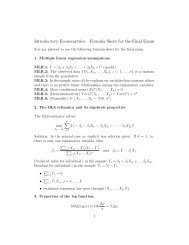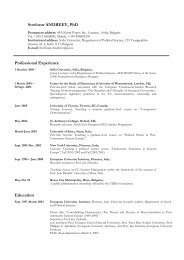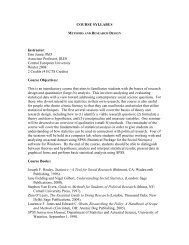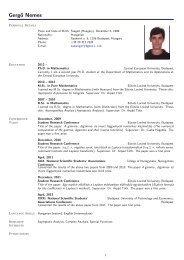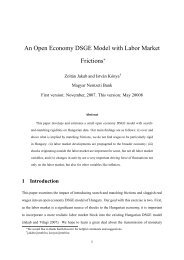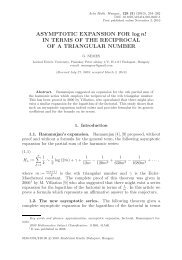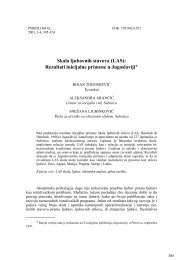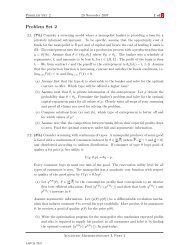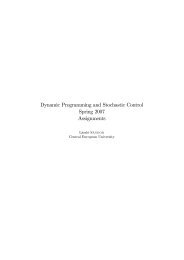Testing Gateway Theory: do cigarette prices affect illicit drug use?
Testing Gateway Theory: do cigarette prices affect illicit drug use?
Testing Gateway Theory: do cigarette prices affect illicit drug use?
You also want an ePaper? Increase the reach of your titles
YUMPU automatically turns print PDFs into web optimized ePapers that Google loves.
694 M. Beenstock, G. Rahav / Journal of Health Economics 21 (2002) 679–698<br />
So much for the two-stage investigation of the causal effect of cannabis <strong>use</strong> on hard<br />
<strong>drug</strong> <strong>use</strong>. We now <strong>use</strong> RBP to investigate the same issue. Strictly speaking, RBP is not<br />
appropriate beca<strong>use</strong> we have added a third link to the gateway chain. A recursive trivariate<br />
probit (RTP) estimator is required. Since RTP is non-standard we have carried out the<br />
following approximation.<br />
(a) We <strong>use</strong> RBP to model the link between <strong>cigarette</strong>s and cannabis.<br />
(b) We <strong>use</strong> the results to obtain PPS, the predicted probability for smoking.<br />
(c) We <strong>use</strong> RBP to model the link between cannabis and hard <strong>drug</strong>s, where PPS is <strong>use</strong>d in<br />
the probit model for cannabis.<br />
This procedure estimates RTP in two stages. When we <strong>use</strong> the variables specified in<br />
Tables 2, 3 and 5 we obtain that the estimate of δ is 0.178 (t = 0.708), implying that the<br />
causal effect from cannabis to hard <strong>drug</strong>s is positive, but not statistically significant. The<br />
associated estimate of ρ is 0.835 (S.E. = 0.135). This result confirms the one obtained by<br />
2SL as reported in Table 5. The estimate of ρ strongly suggests that the gateway effect from<br />
cannabis to hard <strong>drug</strong>s is the result of correlation between the unobserved heterogeneity; it<br />
is not causal.<br />
However, δ became statistically significant when certain variables were dropped from the<br />
model for hard <strong>drug</strong>s. When we dropped “pub frequency” and “education 4”, we obtained<br />
an estimate of δ = 2.61 (t = 5.53) and ρ =−0.22 (S.E. = 0.213). While these restrictions<br />
fail a likelihood ratio test, they undermine the degree to which we can confidently reject the<br />
hypothesis that there is no causal gateway effect from cannabis to hard <strong>drug</strong>s.<br />
4.2. Test 2: initiation hazard<br />
In Table 6 we present a CPHM for smoking initiation in which the “personalized” price of<br />
<strong>cigarette</strong>s is clearly significant, implying that the age of <strong>cigarette</strong> initiation varies directly<br />
with the price of <strong>cigarette</strong>s, after controlling for demographic variables. The model also<br />
implies that women start smoking later, as <strong>do</strong> religious people and Israeli born.<br />
Table 6<br />
CPHM for smoking initiation<br />
Variable Coefficient S.E.<br />
Female −0.496400 0.02364<br />
Israel 0.135970 0.03793<br />
Middle East 0.111880 0.03215<br />
Balkan −0.075090 0.03909<br />
Asia −0.268128 0.11848<br />
Eastern Europe −0.152799 0.04350<br />
Education 4 0.216162 0.03074<br />
Religious (high) −0.547501 0.03484<br />
Religious (middle) −0.148835 0.02748<br />
Survey 1989 0.106948 0.02992<br />
Cigarette price −0.001895 0.000313<br />
N = 12,455; −2log L = 13,1067; P-value for χ 2 = 0.0001.



